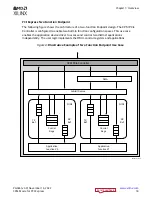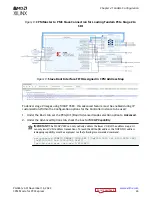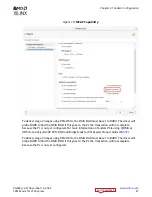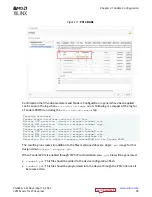
Chapter 2
Tandem Configuration
Overview
PCI Express
®
is a plug-and-play protocol, meaning that at power up the PCIe
®
host will
enumerate the system. This process consists of the host enumerating PCIe devices and assigning
them base addresses. As such, PCIe interfaces must be ready when the host queries them or they
will not get assigned a base address. The PCI Express specification states that PERST# can
deassert 100 ms after the power good of the systems has occurred, and a PCI Express port must
be ready to link train 20 ms after PERST# has deasserted. This is commonly referred to as the
100 ms boot time requirement, even though 120 ms is the fundamental goal.
Xilinx devices can meet this 120 ms link training requirement by using Tandem Configuration, a
solution that splits the programming image into two stages. The first stage quickly configures the
PCIe endpoint(s) so the endpoint is ready for link training within 120 ms. The second stage then
configures the rest of the device. Two variants are supported:
• Tandem PROM: Loads both stages from a single programming image from a standard primary
boot interface.
• Tandem PCIe: Loads the first stage from a primary boot interface, then the second stage is
delivered via one of the CPM PCIe controllers.
Within Xilinx Versal
®
ACAP, the CPM consists of two PCIe controllers, DMA features, CCIX
features, and network on chip (NoC) integration. The Versal
®
ACAP CPM Mode for PCI Express
enables direct access to the two high-performance, independently customizable PCIe controllers.
You can select to have one or both of these controllers enumerate within 120 ms using Tandem
Configuration.
While the term Tandem Configuration has been carried forward from prior iterations of this
technology applied in 7 series, UltraScale™, and Ult™ silicon, the solution is
fundamentally different in Versal given how the PCIe controllers are built and configured. No
programmable logic is needed to activate an endpoint, so only CPM, CPIPE, NoC, and GTY
resources are included along with the PMC in the first stage.
Chapter 2: Tandem Configuration
PG346 (v3.3) November 16, 2022
CPM Mode for PCI Express
23






























